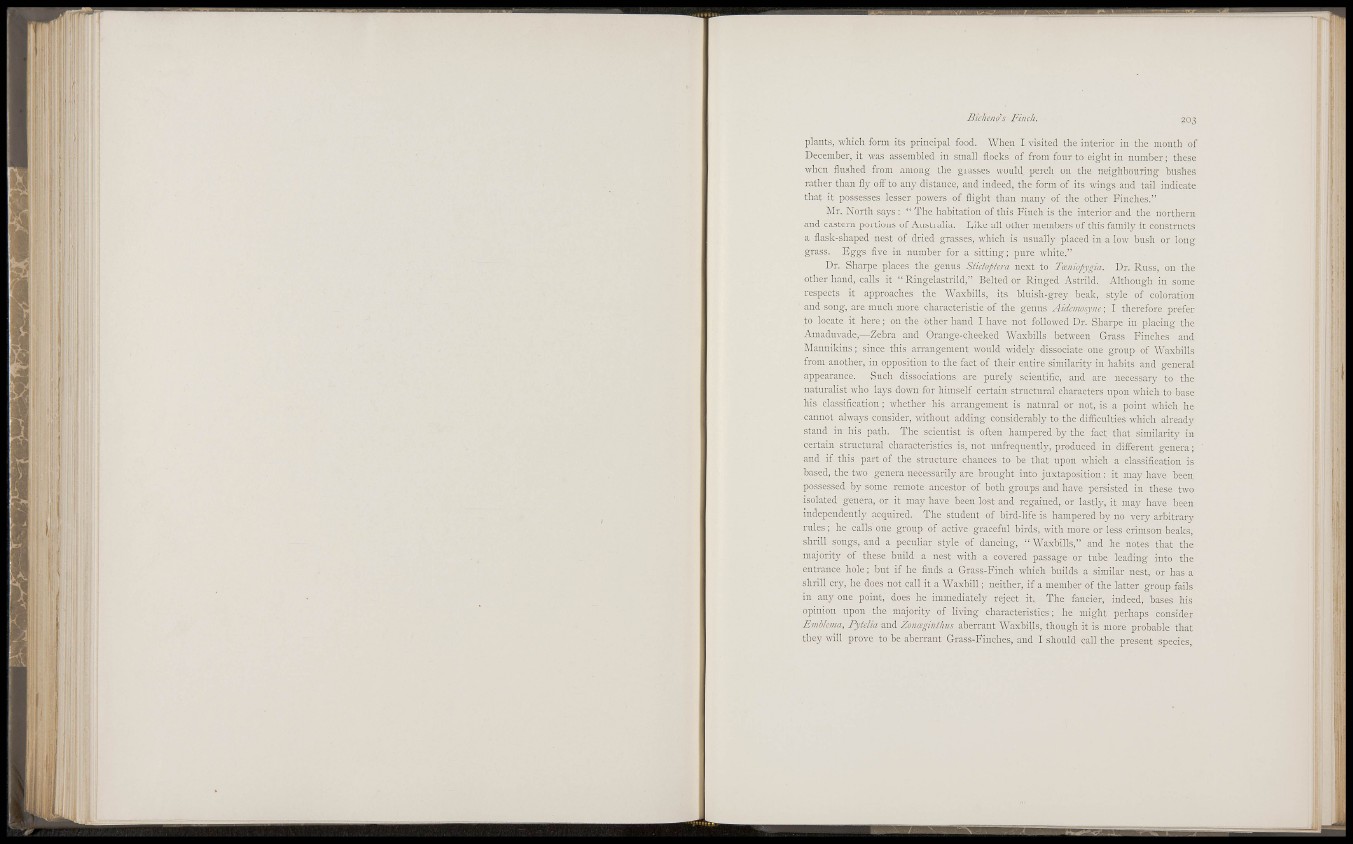
H
m iiM.!
I; :
M
I
ili Ifj
s 1
! if
li i
i !
Bicheno's Finch. 2 0 3
plants, wliidi form its principal food. When I visited the interior in the month of
December, it was assembled in small flocks of from four to eight in number; tliese
when flushed from among the grasses would perch on the neighbouring bushes
rather than fly off to any distance, and indeed, the form of its wings and tail indicate
that it possesses lesser powers of flight than nmny of the other Finches."
Mr. North sa3's : " The habitation of this Finch is the interior and the northern
and eastern portions of Australia. Like all other members of this family it constructs
a flask-shaped nest of dried grasses, which is usually placed in a low bush or long
grass. Eggs five in number for a sitting; pure white."
Dr. Sharpe places the genus Stictoptcra next to Tceuiopy^ia. Dr. Russ, on the
other hand, calls it " Ringelastrild," Belted or Ringed Astrild. Although in some
respects it approaches the Waxbills, its bluish-grey beak, style of coloration
and song, are much more characteristic of the genus Aideinosyiic I therefore prefer
to locate it here; on the other hand I have not followed Dr. Sharpe in placing the
Amaduvade,—Zebra and Orange-cheeked AVaxbills between Grass Finches and
Mannikins ; since this arrangement would widely dissociate one group of Waxbills
from another, in opposition to the fact of their entire similarity in habits and general
appearance. Such dissociations are purely scientific, and are necessary to the
naturalist who lays down for himself certain structural characters upon which to base
his classification ; whether his arrangement is natural or not, is a point which he
cannot always consider, without adding considerably to the difEculties which already
stand in his path. The scientist is often hampered by the fact that similarity in
certain structural characteristics is, not unfrequeutly, produced in different genera;
and if this part of the structure chances to be that upon which a classification is
based, the two genera necessarily are brought into juxtaposition : it may have been
possessed by some remote ancestor of both groups and have persisted in these two
isolated genera, or it may have been lost and regained, or lastly, it may have been
independently acquired. The student of bird-life is hampered by no very arbitrary
rules; he calls one group of active graceful birds, with more or less crimson beaks,
shrill songs, and a peculiar style of dancing, " Waxbills," and he notes that the
majority of these build a nest with a covered passage or tube leading into the
entrance hole; but if he finds a Grass-Finch which builds a similar nest, or has a
shrill cry, he does not call it a Waxbill; neither, if a member of the latter group fails
in any one point, does he immediately reject it. The fancier, indeed, bases his
opinion upon the majority of living characteristics; he might perhaps consider
Embhma, Pytdia and Zonccgiiifhiis aberrant Waxbills, though it is more probable that
they will prove to be aberrant Grass-Finches, and I should call the present species,
¡; I,
I t i !
f